Urban green spaces often become entangled in notions of heritage. Multiple factors explain this convergence, from the historical origins of so many major urban green spaces, to the range of values (cultural, spiritual, etc.) that are tied to these places (see Feng & Tan, 2017; Forrest & Konijnendijk, 2005) and linked to matters of memory and identity, with which heritage is habitually concerned. Furthermore, there is an evident degree of overlap between practices of nature conservation, within which some urban greening efforts can be embedded, and those practices related to the preservation and protection of any given material or immaterial heritage, which can obviously include natural heritage. In fact, the very conceptualisation of “natural heritage” has evolved in part as a reaction to processes of urbanisation [i] ― this has, however, commonly been translated into legislation and planning policies that reinforce a nature-urban dichotomy which presents certain difficulties to contemporary urban green space management and planning practices (Berdoulay & Soubeyran, 2013, pp. 351-352).
Despite playing a role in the protection of many important green zones in urban areas, traditional conceptions of heritage can, at times, prove inadequate to pursue current greening strategies, even constituting a hindrance to the sustainable management of the spaces they seek to preserve. This does not necessarily entail a need to excise heritage discourses from discussions on nature conservation or urban greening, though. Conventional notions of heritage have long been questioned by scholars, and alternative understandings of what constitutes heritage have been put forward, which could become useful to incorporate into policy and practice. In some circumstances, even more conventional views are still justifiably being leveraged in the defence of urban green areas.
This article is organised into two sections ― first, considering the European context, some of the reasons which explain the inadequacy of long-established heritage frameworks for supporting urban greening efforts are clarified, before presenting alternative conceptualisations that could prove more beneficial. In the second section, cases from Paris, Brussels, and Lisbon are weighed to illustrate how different notions of heritage can sometimes be advantageously employed to preserve urban green spaces. It is here argued that, though predominant conceptions of heritage guiding policymaking have largely become antithetical to sustainable development practices, under certain circumstances these might still prove relevant. Moreover, debates from the field of heritage studies in recent decades have put forward alternative frameworks which have the potential to support rather than hinder contemporary city greening practices, should they effectively be introduced into policy ― this article then also calls for their consideration. The methodology employed is based on a bibliographical review, discourse analysis, and insight from relevant actors.
Inadequate protection
Depending on the legislation of any given country, heritage classification can afford a site some of the highest degrees of protection from destruction, intervention, or redevelopment. Despite the efficacy with which it has preserved historical urban green areas, this tool is often not particularly appealing to planners, policymakers, and other practitioners pursuing ecological goals. During a recent guest lecture at Vrije Universiteit Brussel (VUB), Etienne Aulotte, head of department at Bruxelles Environnement, explained some of the major limitations of this statute for nature planning and conservation in Brussels. The main issue is that the very strict protection conferred by this classification also makes it very restrictive when it comes to managing the protected sites in an adaptable manner. Legislation in place dictates that the original layouts, visual appearance, and maintenance practices of these places must be rigorously adhered to, regardless of ecological concerns and methodological anachronisms. A couple of examples illustrate the difficulties faced by practitioners and experts:
[In these historical sites] if the trees disappear, for phytosanitary reasons, for example, you have to replace the tree by exactly the same trees. […] And this is problematic because you have species [which] are [not] adapted to climate change, for example, so you need to change the species, but you cannot. And you have to cut the grass like it was historically, […] so you have to cut the grass every week because it has to be landscaped, clean, etc. So it’s totally against ecological management, because if you cut the grass every [week] it’s dramatic for insects and things like this […]. (Aulotte, 2022)
Aesthetic considerations and material historical continuity are pursued to the detriment of environmental preoccupations. These kinds of restrictions can make it very difficult to engage in sustainable greening practices, especially in the case of dense historical city centres in which, due to developmental pressures, the few remaining green areas might be precisely those which enjoy protection due to similar statutes. What is highlighted is a mismatch between dominant conceptions of heritage as enshrined in policy and the needs identified by experts and practitioners on the terrain, which has become commonplace (see e.g., DeSilvey et al., 2020, pp. 359; 368), and which is not exclusive to natural heritage. The contrast identified ― between a top-down conception of heritage as a set of specific endangered material objects which require preservation and a more practical approach that regards it as a socially embedded process and recognises the need for adaptation ― seemingly signifies an ongoing transition in attitudes towards heritage that has been gradually taking place. Natural heritage, specifically, has registered this phenomenon with an accentuated sense of urgency brought about by the undeniable immediacy of climate change.
Until this point, the predominant vision was of natural heritage being an element of an environment that needed to be saved. This element however was […] relatively residual. A rescue failure would not jeopardize society […] Today, what seems to be required of natural heritage is of an entirely different ambition and responsibility. (Berdoulay & Soubeyran, 2013, p. 352)
Berdoulay & Soubeyran describe two possible resulting approaches to planning as a reaction to this challenge, establishing a distinction between resistance heritage and resilience heritage. The first reaction of resistance, however, remains relatively conventional, in the sense that it seeks to restore a locationally bounded area back to a former state, whereas, in resilience heritage, the “focus is less on providing a way back to the system’s initial state after its ecological destabilization, and more on conceiving its self-organizing, learning and evolutionary capacities” (ibid., p. 356), identifying itself with “the initiative capacity of the affected community, often in novel, surprising, or informal and makeshift ways”. This narrative, in a sense, shifts the focus of preservation towards more humanised and immaterial heritages:
[…] this approach to creating heritage out of nature seeks to show the importance of maintaining the continuity of certain practices, certain kinds of life, all the while recognizing evolutionary and changing aspects. As such, in terms of heritage, we retain the precious nature of something to preserve, something worthy of universal interest. (ibid., p. 357)
The transition here described echoes a larger shift within the field of heritage studies, away from rigid conventions, and granting a renewed importance to heritage-making practices, or the processes that surround heritage and through which meaning and value is ascribed to it (see e.g., Smith, 2006).
In recent years, the recognition of widespread ecological and social change has been attended by the emergence of new theoretical approaches, understanding heritage as a socially embedded, future-oriented process through which the past is brought into the present to shape new practices and environments. These approaches frame heritage significance as an emergent, relational property ― not an inherent quality linked to the preservation of specific material states […] Change and transformation has been reframed as an integral element of heritage, with the potential to generate new connections between the past and the future and between human and more-than-human agents (DeSilvey et al., 2020, p. 360).
Such a shift in perception, if adequately translated into an effective heritage protection policy, could more aptly accommodate novel forms of ecological management within historical urban green spaces, maximizing the ecosystem services which these afford. Such a re-thinking of policy is, in fact, one of the objectives being pursued by Bruxelles Environnement, in cooperation with other international partners, through the LIFE Preparatory programme (Aulotte, 2022; see also Bruxelles Environnement, 2022). Until statutes are revised, however, environmental management professionals must continue to navigate the discrepancies between the rules and practices of heritage.
In the following section, several cases are briefly considered, illustrating opportunities for urban greening opened by heritage, ranging between more or less progressive views of what this notion entails.
Natural heritage in the making
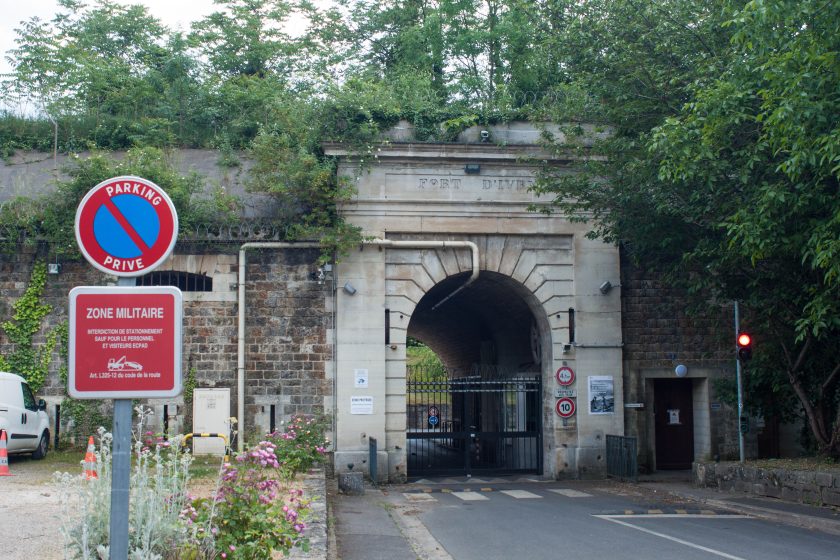
Standing at the top of a hill immediately southeast of Paris, largely engulfed in vegetation, is Fort D’Ivry, a XIX century fortification that nowadays houses the French military’s audio-visual archives within its walls ― outside them, on the fort’s moat and glacis, 250 plots of community gardens are cultivated across 7,5 hectares.[ii] Similarly, just to the north of the city, in Aubervilliers, another set of community gardens cover 7 hectares of the glacis of a different fort from the same period.[iii] Both forts (along with fourteen other similar structures) were part of the network of fortifications that complemented the Thiers Wall (Enceinte de Thiers), designed to defend Paris during the second half of the XIX century. Having lost their original military function, much of this infrastructure has been repurposed or redeveloped. In the cases of Ivry and Aubervilliers, the interstitial spaces that surround the forts have so far retained large areas of green space, partly due to the presence of their now historic workers’ gardens (jardins ouvriers), established through the efforts of priest and social reformer Jules Auguste Lemire.
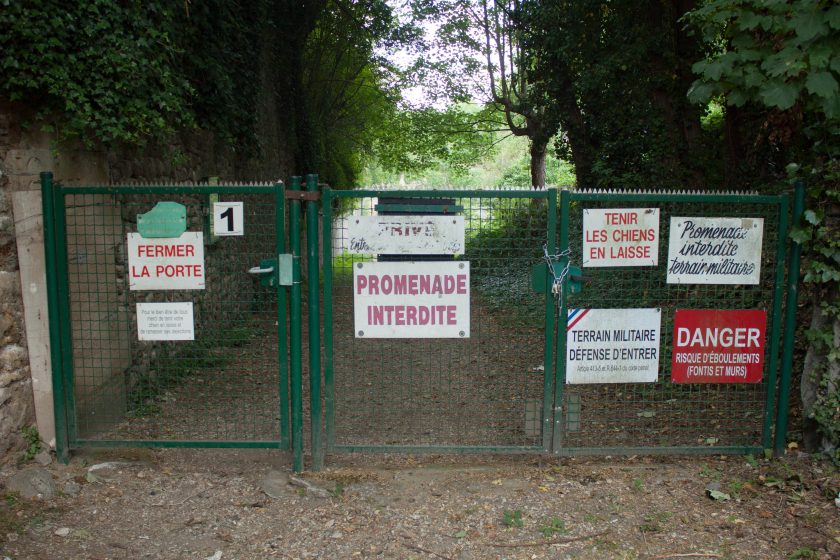
However, the continuity of these practices that have been taking place around both forts is far from guaranteed. In Aubervilliers, gardeners are currently engaged in a long dispute for the right to carry on with the cultivation of these terrains, which had been targeted for redevelopment in the context of the 2024 Paris Olympics. Through petitions, protests, occupation, and other available means, the association of workers’ gardens, now called “gardens to be defended” (jardins à défendre), has been attempting to fight against the construction of a solarium within the terrains of the gardens, planned as a complement to a future Olympic swimming pool. The discourse which supports the association’s claims and acts of resistance hinges on various arguments. In their communications, appeals are made to matters of environmental and social justice, to the full scope of ecosystem services provided by the gardens (provisioning, regulating, supporting, and cultural), and (more relevantly for this paper) to the historical and patrimonial value of the gardens.
An explanatory text on the Association’s webpage begins by stating that “[f]or nearly a hundred years, the workers’ gardens of Aubervilliers have been prolonging the horticultural history of Seine-Saint-Denis”, adding that “[t]hese natural areas are a precious heritage with a rich biodiversity” (Jardins à défendre (JAD), 2022) [own translation].[iv] The passage emphasises not only the long history of the place itself but also establishes a continuity between the work undertaken in the gardens and a much older set of practices in the extended area where these are located. This act of identification, contextualisation, and thus of heritage-making is reiterated, for example, in a more comprehensive publication by the collective (Collectif de Défense des Jardins Ouvriers des Vertus, 2020, pp. 28-29), which includes a section devoted to this framing of their history. Though this can be regarded as relying on more progressive notions of heritage, it is apparent how, in similar circumstances, even more conservative stances can already be called upon to uphold claims to urban (green) spaces. This is recognized by the gardeners themselves, who stress it, for instance, when stating that “[i]t is also impossible to understand how GPA [Grand Paris Aménagement], in spite of its numerous declarations concerning the patrimonial importance of the allotments, can decide to hand over more than one hectare of this heritage to property development” (ibid., p. 13).[v]
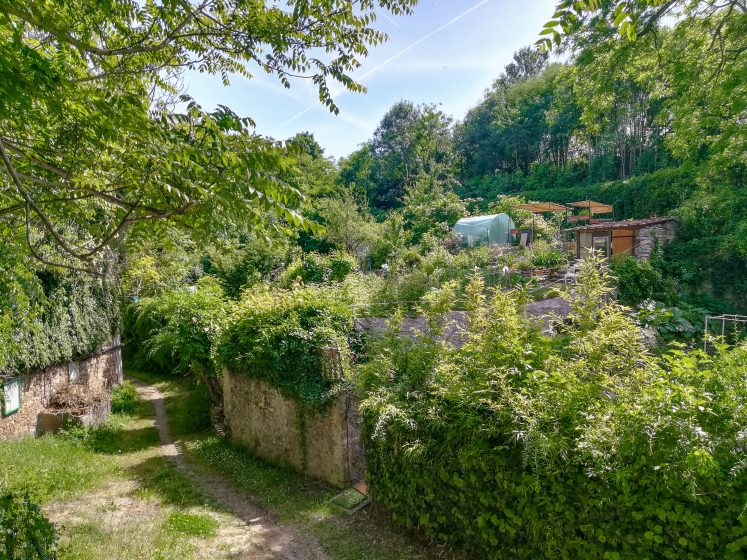
In Ivry, workers’ gardens sharing a similar setting have encountered similar challenges. Following a ground subsidence incident, access to the military grounds in which the gardens are located was restricted. A lengthy process of resistance and negotiation then ensued, as certain areas are deemed unsafe, and it is unclear who (if anyone) will bear the costs of consolidating the terrains. Despite the area being labelled a sensitive natural space (Espace Naturel Sensible), which should protect it as a green space and biodiversity hotspot, this statute gives the gardeners’ association little assurance as to the continuation of their current practices. Faced with the possibility of having parts of the garden lost or redeveloped, as well as risking external interference in their relatively autonomous organisation, Ivry’s gardeners also leverage their history to legitimise and defend their position. Physical memorials erected in a square within the gardens celebrate the former heads of the association, simultaneously establishing a direct lineage from its founder, Father Jules Lemire, through Gustave Marque and Jacques Perreau, until the current president, Jean Huart. This suggestion of a legitimate lineage is also present in the association’s web page, which includes sections on the history and heritage of the workers’ gardens (see Association des jardins ouvriers d’Ivry, 2022). Additionally, the association is now in contact with Jules Lemire’s museum house, in Hazebrouck, establishing a partnership that could help cement their heritage claims.
In both these cases, the sought outcome is a form of perpetuation of established practices in each space. Though a greater legislative concern with immaterial heritage and its cultural practices would likely benefit the interested parties, even an appeal to a conservative notion of heritage (one which is restrictive, inflexible, and resistant to change) suitably furthers their agenda. Appeals to heritage have the potential to support resistance to processes of expropriation,[vi] and further struggles for the right to urban green spaces.
The forts at Ivry and Aubervilliers constitute examples of what can be referred to as transitional spaces ― sites that have lost their originally intended function and which present opportunities for heritage-making practices to take place and manage the processes of change in a way that both respects their history and allows for new usages that serve local communities.
Many of these transitional spaces within cities equally present occasions for urban greening. Former industrial areas, for instance, often have significant heritage value at risk of demolition due to developmental pressures. These spaces can, however, be revitalized, and greening practices can not only provide much-needed ecosystem services to formerly grey areas but also engage with their heritage. Parc de la Senne (or the upcoming Parc de la Sennette)[vii], in Brussels, for example ― a green corridor meandering through a dense, post-industrial neighbourhood within the city ― not only revives a former industrial area through greening, but simultaneously helps to recover a connection with the historical and eponymous river which used to run through its location (having been diverted and partially vaulted in the XIX century).
Innovative forms of ecological management can likewise take place in the context of heritage protection, as demonstrated by the recently renovated Jardin Jean-Felix Hap,[viii] also in the Belgian capital.
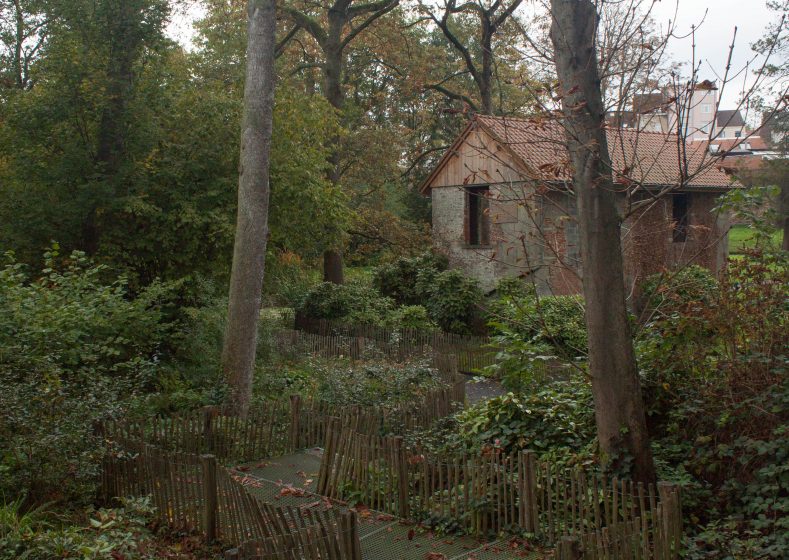
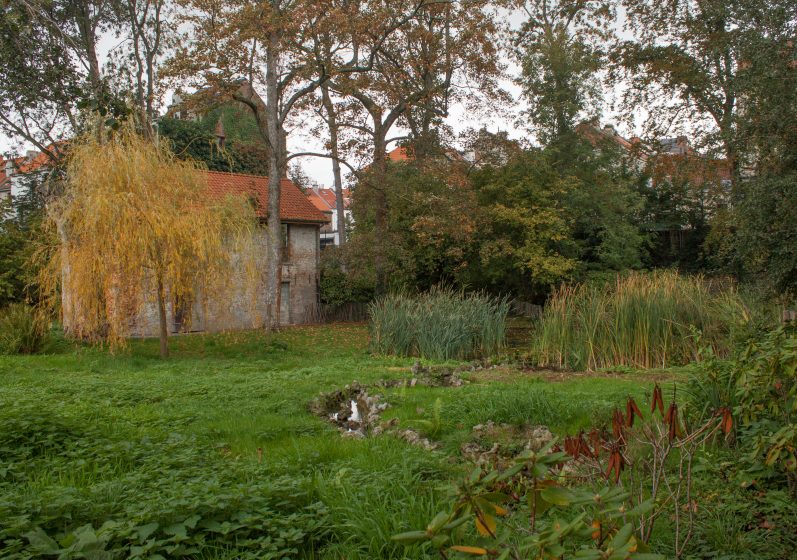
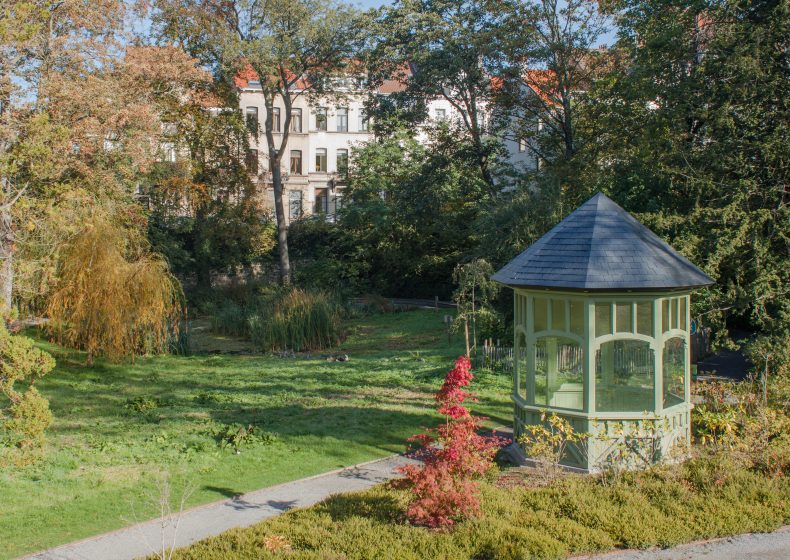
In this case, formerly private domains, listed for their historical, urbanistic, and aesthetic values, did not impede the establishment of wilder areas in the now-public park. Despite its relatively small footprint (approximately 1 hectare) and mixed uses, the park has become a haven for numerous species of birds, insects, and amphibians, for instance. In fact, restrictions on the park’s uses, such as a ban on sports activities, have not only made both natural and heritage preservation easier, but have also created a quiet green space for rest and relaxation in the neighbourhood (which offers alternative spaces for the regulated practices). Additionally, the creation of community gardens in the property re-establishes a connection to the site’s horticultural history.
But, even if there is room for working with heritage towards urban greening targets through conventional legislation, novel conceptions of heritage should still supersede these statutes. Considering, for instance, urban forests, it can be argued that their true heritage value lies not so much in their appearance, but rather in the ecosystem services they provide. The case of Monsanto Forest Park, a roughly 1000 hectares urban forest in Lisbon, exemplifies this claim, as the original motivations for planting it pertained to its climate regulation, health, and recreational benefits (Ministério das Obras Públicas e Comunicações, 1934). Here the services and practices associated with the forest arguably hold more heritage value than its materiality, making the forest worth preserving regardless of aesthetic considerations and historic management protocols. Researchers are also experimenting with applying the Miyawaki method[ix] to interstitial spaces within the Portuguese capital city, in what could be regarded as a form of new heritage-making, by preserving and connecting people to local species of fauna and flora (see Fernandes, 2021).
As these examples show, by considering new values, such as historical ecosystem services[x], socio-cultural practices, or local and native biodiversity, we open the door to new forms of heritage-making which are in line with sustainable development goals.
Conclusion
Though there is often a mismatch between heritage policies and the needs encountered by professionals seeking sustainable management of urban green infrastructure, there are still circumstances in which the classification of a given space might confer a degree of protection that largely compensates for the restrictions it could entail. In addition, more progressive conceptions of heritage, which are gradually being translated into policy, present novel opportunities for city greening efforts to take place, particularly in transitional spaces, whose history can be preserved even as they are reinvented through active heritage-making practices. Further research could help clarify in which scenarios it would be desirable to pursue green heritagisation strategies, how best to curate a given site’s history in the context of redevelopment or adaptive re-use, as well as identify potential pitfalls of such an approach, which could include, for instance, accelerated degradation of certain vulnerable heritage sites, or a combined risk of green and heritage gentrification.
Fábio Gouveia
Brussels
References
Association des jardins ouvriers d’Ivry. (2022). Patrimoine – jardins ouvriers d’ivry. https://www.jardins-ouvriers-ivry.com/patrimoine-a-defendre
Aulotte, E. (2022). Lecture: Greening the City – The Case of Brussels. Vrije Universiteit Brussel.
Beeksma, A., & de Cesari, C. (2018). Participatory heritage in a gentrifying neighbourhood: Amsterdam’s Van Eesteren Museum as affective space of negotiations. International Journal of Heritage Studies, 25(9), 974–991. https://doi.org/10.1080/13527258.2018.1509230
Berdoulay, V., & Soubeyran, O. (2013). The meaning and role of natural heritage within a context of sustainable planning and climate change. L’Espace Géographique (English Edition), 42(4), 350–360. https://doi.org/10.2307/26213696
Bruxelles Environnement. (2022). LIFE préparatoire – Urban Greening Plans – LIFE20 PRE/BE/000008 | Bruxelles Environnement. https://environnement.brussels/thematiques/espaces-verts-et-biodiversite/action-de-la-region/life-preparatoire-urban-greening-plans
Collectif de Défense des Jardins Ouvriers des Vertus. (2020). Projet de Destruction des Jardins Ouvriers des Vertus à Aubervilliers. Jardins Des Vertus (Provisional Version). https://www.jardinsaubervilliers.fr/CahierJardin.pdf
DeSilvey, C., Bartolini, N., & Lyons, A. (2020). Living with Transformation. In Heritage Futures. UCL Press. https://www.jstor.org/stable/j.ctv13xps9m.30
Feng, Y., & Tan, P. Y. (2017). Imperatives for Greening Cities: A Historical Perspective (pp. 41–70). https://doi.org/10.1007/978-981-10-4113-6_3
Fernandes, C. (2021, May 19). Minifloresta está a nascer em Lisboa, através do método Miyawaki | National Geographic. National Geographic. https://www.natgeo.pt/meio-ambiente/2021/05/minifloresta-esta-a-nascer-em-lisboa-atraves-do-metodo-miyawaki
Forrest, M., & Konijnendijk, C. (2005). A History of Urban Forests and Trees in Europe. In C. Konijnendijk, K. Nilsson, T. Randrup, & J. Schipperijn (Eds.), Urban Forests and Trees (pp. 23–48). Springer. https://doi.org/https://doi.org/10.1007/3-540-27684-X_3
Jardins à défendre (JAD). (2022). Défense des jardins ouvriers d’Aubervilliers. https://www.jardinsaubervilliers.fr/index.html
Ministério das Obras Públicas e Comunicações. (1934). Decreto-lei no 24625. In Diário do Govêrno n.o 257/1934: Vol. Série I. https://files.dre.pt/1s/1934/11/25700/19471948.pdf
n.d. (2022). Akira Miyawaki | Method & Condition For Success. http://akiramiyawaki.com/research-and-development/methods-and-conditions-for-success-of-miyawaki-method/
Smith, L. (2006). Uses of Heritage. Routledge. https://www.routledge.com/Uses-of-Heritage/Smith/p/book/9780415318310
Notes
[i] One can see this dimension emerging in interpretations of the concept of stewardship from several countries, for instance (see https://www.thenatureofcities.com/2019/10/11/how-is-the-concept-of-stewardship-and-care-for-local-environments-expressed-around-the-world/ ).
[ii] This location was visited in May 2022, in the context of a research project done in collaboration with Larissa Gorbatikh, where we interviewed the president of the gardener’s association and a few of the gardeners. See https://www.jardins-ouvriers-ivry.com/
[iii] https://www.jardinsaubervilliers.fr/
[iv] Original passage: “Depuis près de cent ans, les Jardins ouvriers d’Aubervilliers prolongent l’histoire maraîchère de la Seine-Saint-Denis, sur 7 hectares ceinturant le Fort. Ces espaces naturels sont un patrimoine précieux avec une riche biodiversité” (Jardins à défendre (JAD), 2022).
[v] Original: “Impossible également de comprendre comment GPA, malgré ses nombreuses déclarations concernant l’importance patrimoniale des potagers peut décider de livrer plus d’un hectare de ce patrimoine à la promotion immobilière” (Collectif de Défense des Jardins Ouvriers des Vertus, 2020, p.13).
[vi] For a more nuanced description of how a neighbourhood resisted redevelopment through an appeal to heritage, but in which the seemingly bottom-up initiative was ultimately co-opted by governance see Beeksma & de Cesari, 2019.
[vii] See https://gardens.brussels/fr/espaces-verts/parc-de-la-senne (and https://environnement.brussels/thematiques/espaces-verts-et-biodiversite/action-de-la-region/parc-de-la-sennette).
[viii] https://gardens.brussels/fr/espaces-verts/jardin-jean-felix-hap
[ix] A method of forestation focusing on the use of indigenous species to quickly establish rich ecosystems which are especially adapted to a given location’s climate (n.d., 2022).
See also: http://akiramiyawaki.com/ and https://daily.jstor.org/the-miyawaki-method-a-better-way-to-build-forests/
[x] Ecosystem services that, as Erika Svendsen reminds us, may include collective memory (see e.g., https://www.thenatureofcities.com/2013/05/01/tree-rock-human/).

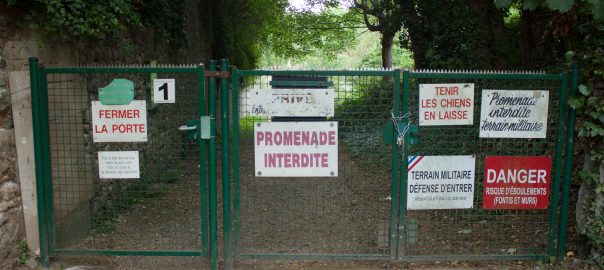


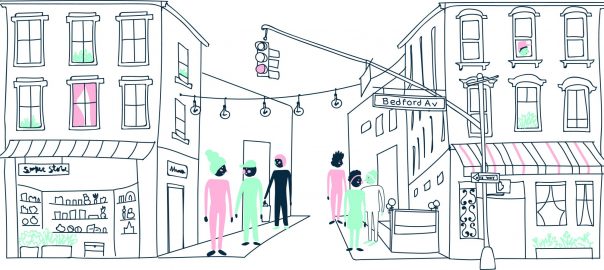




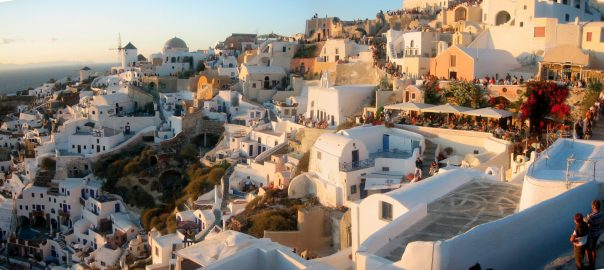
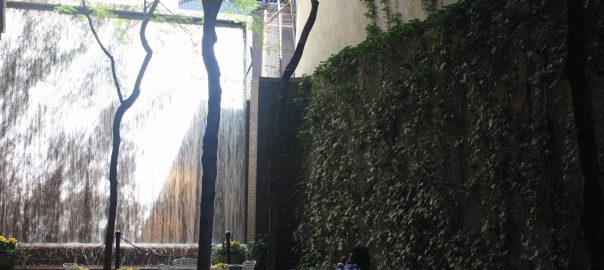

Add a Comment
Join our conversation